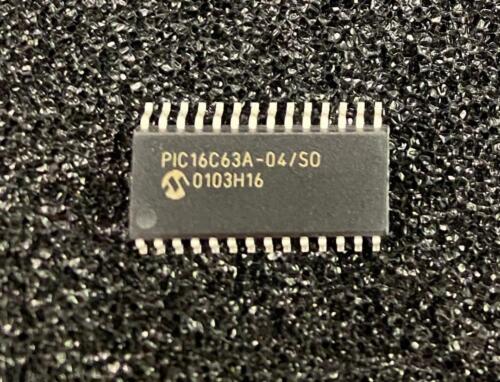Clone Microprocessor PIC16C63A Flash Memory Data
Clone Microprocessor PIC16C63A Flash Memory Data after attack PIC16C63A secured MCU tamper resisteance system over its flash program memory and eeprom data memory, dump embedded firmware in the format of binary data or heximal file out of locked microcontroller PIC16C63A;

- CPU Core: The heart of the microcontroller, responsible for executing instructions and controlling the operation of the device.
- Memory:
- Program Memory (ROM): Stores the firmware or program code that the microcontroller executes.
- Data Memory (RAM): Used for storing data and variables during program execution.
- I/O Ports: Connects the microcontroller to external devices for input and output operations.
- Timers/Counters: Used for timing and counting operations.
- Serial Communication: Includes UART (Universal Asynchronous Receiver-Transmitter) for serial communication.
- Analog-to-Digital Converter (ADC): Converts analog signals to digital data for processing.
- Protection Mechanisms for Internal Content:
- Code Protection: Many microcontrollers, including the PIC16C63A, offer code protection mechanisms to prevent unauthorized access to the program memory (ROM). This can include:
- Read Protection: Prevents read access to the program memory, making it difficult for someone to extract and copy the firmware.
- Write Protection: Disables write operations to the program memory, ensuring that the firmware cannot be modified or overwritten.
- Data Protection:
- EEPROM: Some microcontrollers have EEPROM (Electrically Erasable Programmable Read-Only Memory) for storing critical data. This data can be protected through encryption or by limiting access permissions.
- RAM: While volatile, RAM contents can still be protected through software measures, such as using specific memory regions for sensitive data and implementing access control mechanisms.
- Security Features:
- Code Encryption: Some microcontrollers support code encryption techniques to make it even more challenging for unauthorized parties to understand and replicate the firmware.
- Secure Boot: Ensures that only authenticated and trusted firmware can be loaded and executed on the microcontroller, preventing tampering with the boot process.
- Fuse Bits and Configuration Settings: Microcontrollers often have fuse bits or configuration settings that can be set during programming to enable or disable certain features, including protection mechanisms. Once set, these settings are difficult to change without specific tools or procedures.
- Physical Security Measures: In addition to software-based protection, physical security measures such as epoxy encapsulation or tamper-resistant packaging can be used to deter reverse engineering and unauthorized access to the microcontroller’s internals.

